Fridays with Fred - A dozen images from the Archives
The first time I entered the Beloit College Archives, I spotted a heap of photographs stacked higgledy-piggledy on top of a metal cabinet. Tugging open a drawer I discovered folder after folder of photographs dating from the mid-19th century through the mid-20th century on all manner of Beloit-related topics.
There were stark views of a pillar-less Middle College, portraits of grim-faced pioneer educators, happy-go-lucky pics of student picknickers, and wild shots of half-naked men clambering up a greased pole to defend or capture a flag. I soon discovered – let’s mix a couple of cliches here – that these were the tip of the iceberg of a bottomless pit.
Over the years I also uncovered thousands of photographs stashed in the attic of Middle College and tucked away in the basement of a former sorority house. Countless unique photographs lurked in albums and scrapbooks. There were boxes and binders chock full of vintage slides which I could only view by holding them up to the light and squinting. And there were thousands upon thousands of photographic negatives, including glass plates from the 1890s, and 4x5 negatives taken by the brilliant art photographer, Ray Metzker, ’53, for the Beloit College News Service, when he was a student.
In time, a wealth of photographs turned up in storage, in office files, and through donations by alumni and friends of the college. I welcomed them all. Every photograph offered fresh details, adding to our knowledge of Beloit College history, while often providing mystery. Who were these people? What were they doing? Where exactly was that? Is there anyone alive who can tell us? Whenever possible, we’d snag someone and ask them to identify and explain. Now and then our own sleuthing brought what I call “eureka moments,” when, at last, we figured something out. And yet so much more in that photographic trove awaits discovery.
To this day, we’ve scanned only an infinitesimal number of slides and negatives and only a fraction of the vast number of photographic prints. Many images don’t fit tidily into one of my “Fridays with Fred” narratives, at least not yet. Here are a dozen images that bring to life Beloit College at a given time.
Every Beloiter remembers the ferocious storms that move into the area on a hot and humid day, explode with crashing thunder and bright flickers of lightning, and leave the campus drenched in rain. On the night of September 24, 1984, with the help of a plugged storm drain, a lake developed in front of the ’64 dorms. As thunder still rumbled in the distance, students fled their un-airconditioned rooms and, with spontaneous joy, cooled off, wading and splashing in between parked cars. 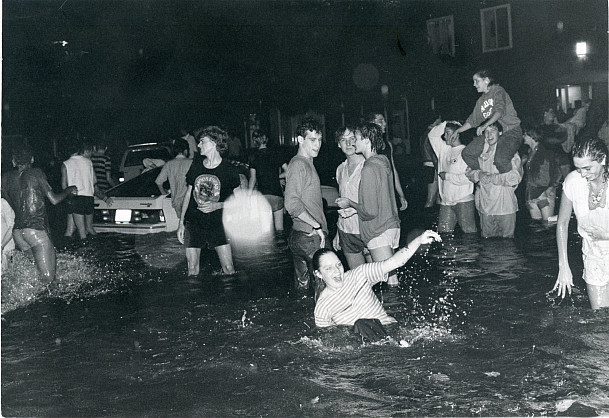
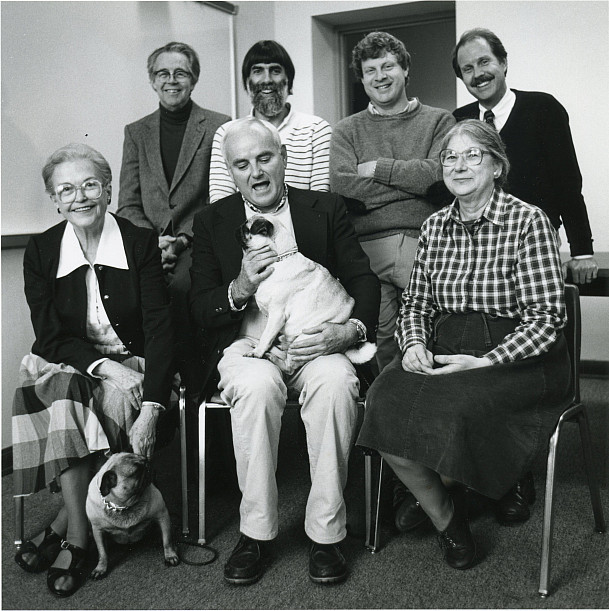

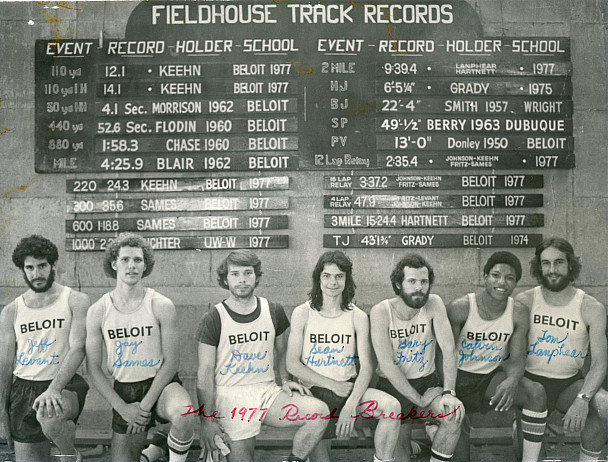
Over the last 30 years, Beloiters strolling through the Morse Library's central entrance would come upon a vast green carpet resembling a putting green. For the library's first 30 years, however, a southside corner entrance brought visitors through a foyer to a sea of linoleum and a marble-topped brick circulation desk. The library's LP collection (including albums of vintage 78 RPM records) squeezed onto shelves behind the desk. 
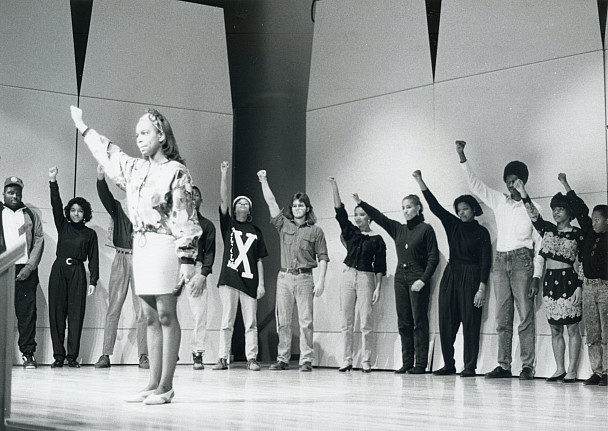
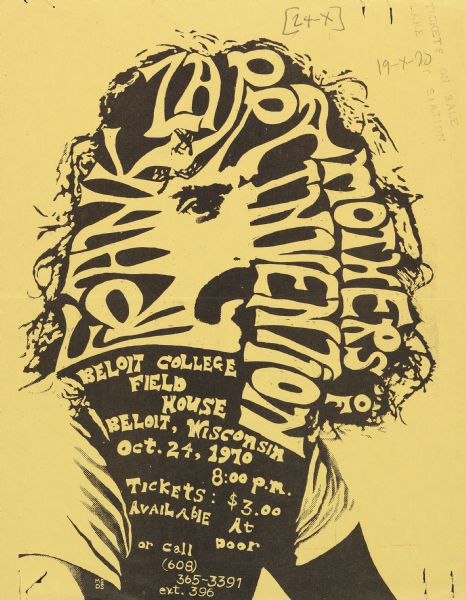
Generations of students have enjoyed downtime at campus pub, the C-Haus. On my last visit there, as an alum, I marveled at how little had changed over the past 35 years, and yet something seemed intangibly different. Then I realized that, even in dim light, I could see across the room! An anti-smoking law had eliminated the billowing clouds of smoke that once greeted students. Countless student bands have honed their musical chops at the C-Haus, including this one in the mid-1980s. Did they have a name?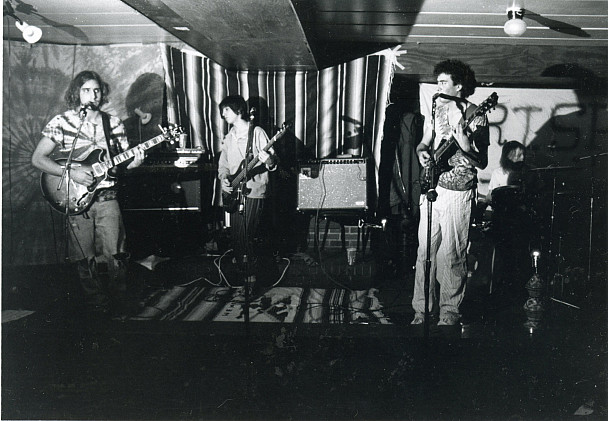


Beloit College founded its World Outlook Program in 1960 and began to step up its exchange and study abroad programs and its modern languages curriculum. After the Morse Library opened in 1962, the college refurbished its old Carnegie Library and dedicated it as the Holman D. Pettibone Center for the Study of World Affairs, later simply nicknamed “WAC.” An undated photo from the early 1960s shows French professor, Jack Street, teaching students in the language lab and employing some newfangled equipment.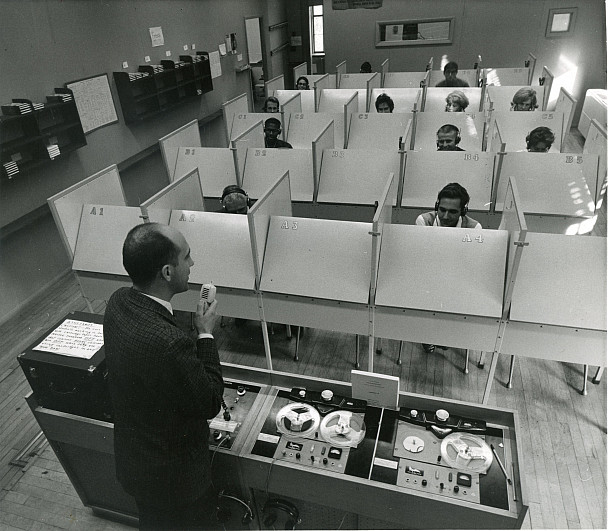
Even at the start of coeducation in the 1890s, women participated in physical education. They dribbled basketballs before men did, swatted baseballs, shot arrows, rode horses, paddled canoes, and whacked hockey balls. What they didn't do, except very sporadically, was participate in intercollegiate sports. That had to wait until the 1970s and Title IX. Here, in the 1920s, are members of the Women's Athletic Association, poised for a game of intramural field hockey, with Pearsons Hall of Science looming nearby.



